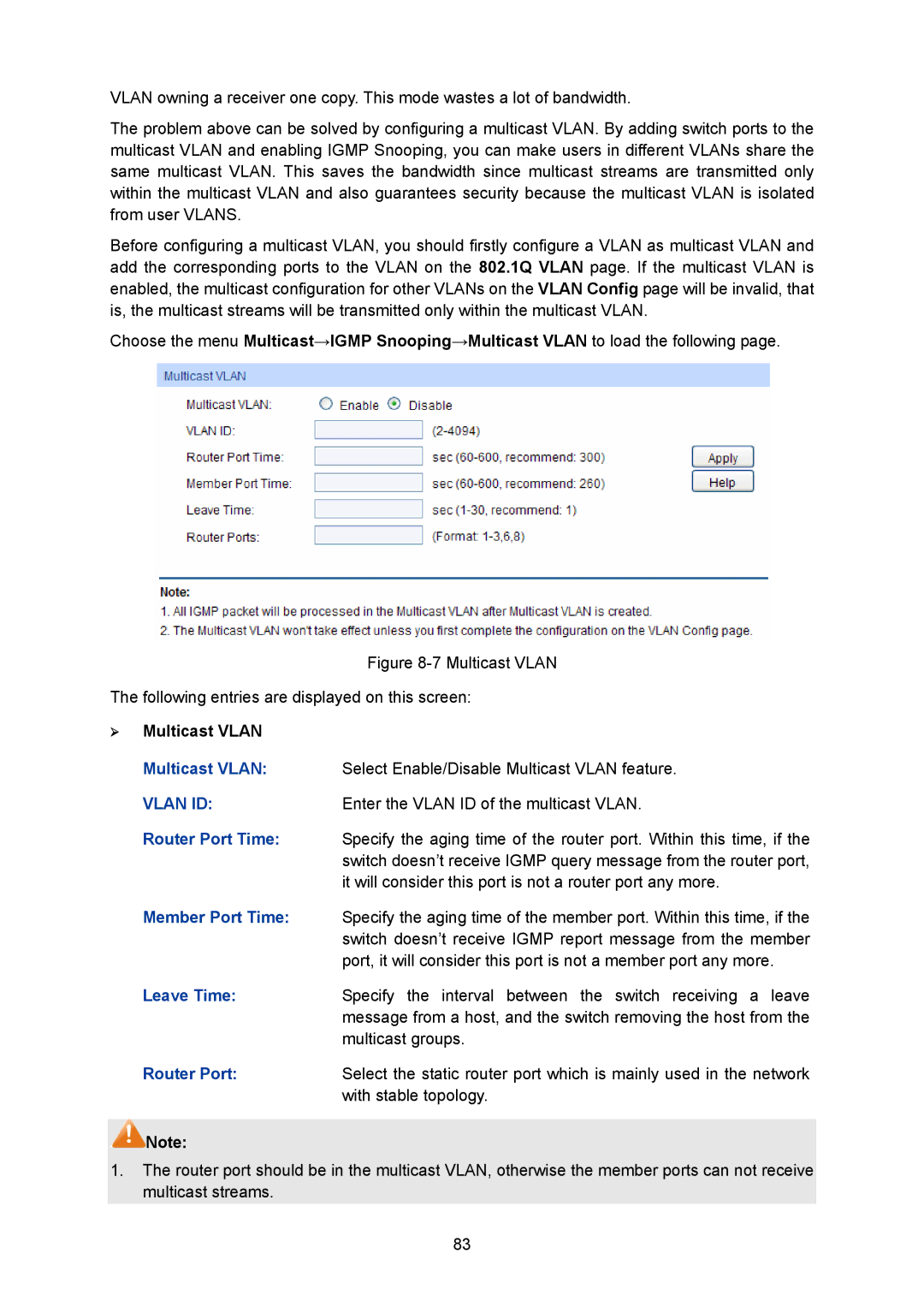
VLAN owning a receiver one copy. This mode wastes a lot of bandwidth.
The problem above can be solved by configuring a multicast VLAN. By adding switch ports to the multicast VLAN and enabling IGMP Snooping, you can make users in different VLANs share the same multicast VLAN. This saves the bandwidth since multicast streams are transmitted only within the multicast VLAN and also guarantees security because the multicast VLAN is isolated from user VLANS.
Before configuring a multicast VLAN, you should firstly configure a VLAN as multicast VLAN and add the corresponding ports to the VLAN on the 802.1Q VLAN page. If the multicast VLAN is enabled, the multicast configuration for other VLANs on the VLAN Config page will be invalid, that is, the multicast streams will be transmitted only within the multicast VLAN.
Choose the menu Multicast→IGMP Snooping→Multicast VLAN to load the following page.
Figure 8-7 Multicast VLAN
The following entries are displayed on this screen:
¾Multicast VLAN
Multicast VLAN: Select Enable/Disable Multicast VLAN feature.
VLAN ID:Enter the VLAN ID of the multicast VLAN.
Router Port Time: Specify the aging time of the router port. Within this time, if the switch doesn’t receive IGMP query message from the router port, it will consider this port is not a router port any more.
Member Port Time: Specify the aging time of the member port. Within this time, if the switch doesn’t receive IGMP report message from the member port, it will consider this port is not a member port any more.
Leave Time:Specify the interval between the switch receiving a leave message from a host, and the switch removing the host from the multicast groups.
Router Port:Select the static router port which is mainly used in the network with stable topology.
![]()
![]() Note:
Note:
1.The router port should be in the multicast VLAN, otherwise the member ports can not receive multicast streams.
83
